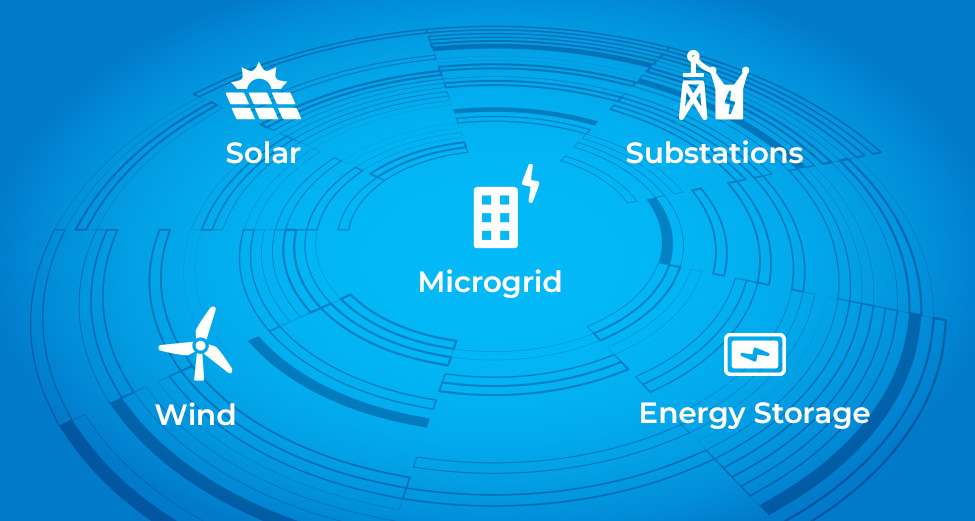Working with EPCs — End-to-End Renewable Energy Engineering Learn More
Blymyer showcases expertise in microgrid design and engineering

In the efforts to create a cleaner and more sustainable energy future, microgrids are being given increasing attention. This is due, in part, to their ability to incorporate renewable energy sources and sustain electricity service during national disasters. Having completed several microgrid design projects in recent months, Blymyer has acquired specific expertise in the unique challenges and opportunities they present.
A microgrid is a self-sufficient energy system that serves a discrete geographic area or entity. It includes power generation, storage, and transmission capabilities working in tandem. An isolated town with an unreliable macrogrid connection might build a microgrid to ensure access to power for its residents. Or a manufacturer facing high restart costs could build a microgrid to support constant operations in the event of power outages affecting the main energy grid.
Microgrids currently provide less than 0.3 percent of U.S. electricity, but their capacity has grown by almost 11 percent in the past four years. At the start of 2023, the United States had 692 microgrids installed, with a total capacity of nearly 4.4 gigawatts. More than 212 of those with a capacity of more than 419 MW have been activated in the last four years. Most microgrid projects are in Alaska, California, Georgia, Maryland, New York, Oklahoma, and Texas. They commonly range in size from 100 kilowatts (kW) to multiple megawatts (MW).
Microgrids connect multiple energy sources
Within microgrids are one or more kinds of distributed energy (solar panels, wind turbines, combined heat and power, generators) that produce its power. Many newer microgrids also contain energy storage, typically from batteries and some even have electric vehicle charging stations.
The difference between a standard project involving just solar, wind, BESS, generators, etc. is that in a microgrid the controls manage and optimize all of them. Rather than being siloed and discrete components, all of the energy sources can be utilized and work in coordination. The challenge in designing microgrids is that they require sophisticated controls to regulate between the various energy sources.
Multifaceted design projects
“Blymyer’s experience with all renewable energy resources makes us particularly qualified to deliver full designs for microgrid systems, including electrical, structural, and architectural design,” says Blymyer President Mike Rantz. “There’s no typical microgrid engineering project—every client has unique requirements and a vision for what they want to achieve. Blymyer has participated in projects that combine wind and solar plants as well as cogeneration.
Among Blymye’s recent microgrid projects in California is one for the the City of Menlo Park Community Center, which combines solar, BESS, and EV charging, and another for El Dorado Union School District, which includes BESS and power generators.
“While every microgrid project is different, the basic challenge remains the same: to engineer systems with just the right balance of generation, storage and cost-efficiency to meet the client’s needs,” explains Greg Mazur, Blymyer’s Director of Engineering.